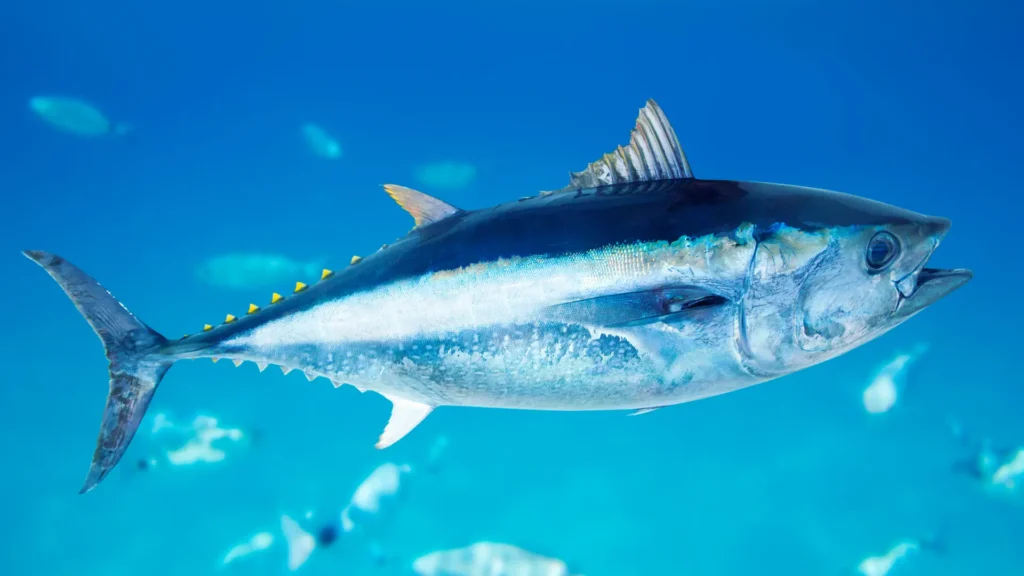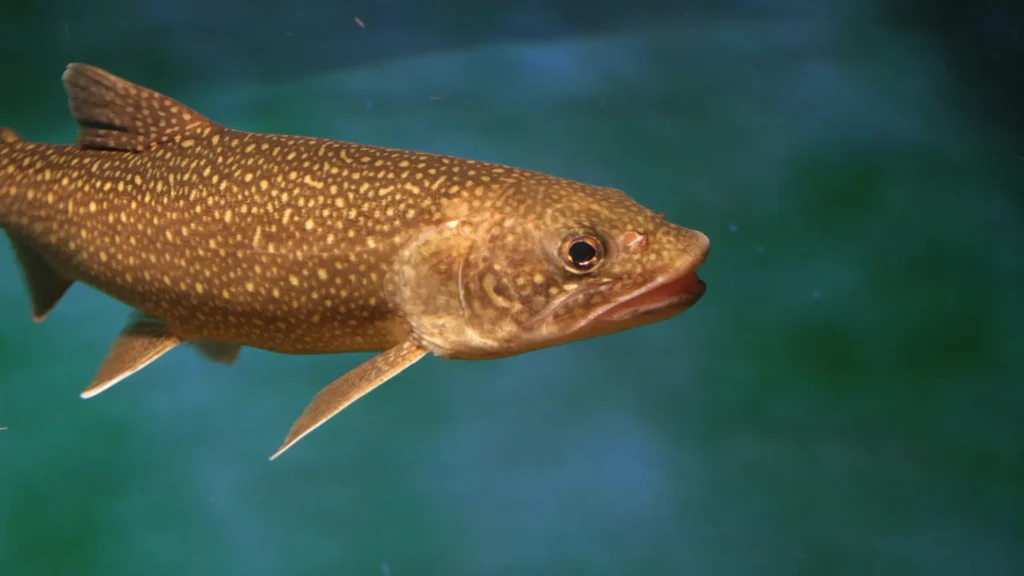The choice of the right hook is essential for achieving success in catfish fishing. Not only does it ensure a secure hookset on the fish, but it also plays a significant role in presenting the bait in an enticing manner, resulting in effective penetration and control during intense battles.
For those new to catfish fishing, selecting the appropriate hooks for reeling in these feisty fish can be a source of confusion. Nevertheless, do not worry, as this blog is committed to delivering you with the essential knowledge and facts you need.
By the time you finish reading this article, you will gain a comprehensive understanding of the various types of hooks available and the appropriate situations in which to use them.
So, let’s kick off our adventure by diving into the basics of fishing hooks.
What is a Fishing Hook?
A fish hook, also known as a fishhook or angle, is an essential tool for catching fish. Its purpose is to either penetrate and lodge inside the fish’s mouth or, less commonly, to impale and snag the external body of the fish.
Types of Catfish Fishing Hooks
- Circle hooks
Circle hooks are designed to hook fish in the mouth, making it easier to release them. They work well with both dead and live baits, offering versatility for different fishing techniques.
When using circle hooks, anglers use a finesse technique called the “dead stick” method. They don’t forcefully pull back on the rod to set the hook. Instead, a delicate touch allows the fish to take the bait and get hooked naturally. This approach leads to successful hooksets and reduces the risk of deep hooking.
This minimizes injuries and stress for the fish, increasing their chances of survival. Scientific research and practical experience firmly establish the positive impact of circle hooks on fish welfare and conservation.
Catch Catfish with Circle Hooks
Circle hooks are versatile and ideal for catfishing in different situations. They particularly excel when fishing near woodpiles and snags, as their hooking mechanism relies on rod movement instead of a free spool run. This prevents the hook from traveling too far, reducing the risk of tangles and break-offs, saving you time and money.
Circle hooks are also effective when river levels are receding, as they ensure fish that strike forcefully cannot easily escape. Additionally, circle hooks simplify catfishing for inexperienced anglers by eliminating complexity and guesswork. Overall, circle hooks provide reliable and efficient solutions for successful catfishing in various scenarios.
- J hooks
J hooks, aptly named for their distinct shape resembling the letter “J,” are renowned for their efficacy in ensnaring fish. They are effective in fitting in a fish’s mouth by latching onto something.
Choosing the right catfish fishing hook is essential. Different hook styles are available, allowing you to match them to your target species. Consider the size of the fish’s mouth when selecting a hook. A smaller-mouthed fish requires smaller hooks, while larger and toothy species need bigger J hooks.
J hooks are incredibly versatile and can be used in various fishing techniques. They are adaptable to both freshwater and saltwater environments, making them suitable for a wide range of fish species.
Catch Catfish with J Hooks
In the past, the J hook was commonly used as the go-to catfish hook. However, it’s worth noting that J hooks have a tendency to allow bait to come off easily. To address this issue, an alternative known as the baitholder hook emerged in the market.
Baitholder hooks feature barbs along the shank, which serve to securely hold the bait in place, particularly live bait. While these hooks are effective in keeping bait intact, it’s important to consider that they can puncture a catfish’s stomach.
- Octopus hooks
The octopus hook, though similar in appearance to a circle hook, was originally created with live bait fishing in mind. Its versatility makes it suitable for a wide range of fishing techniques and enables anglers to target different fish species using both natural and artificial bait.
Catch Catfish with Octopus Hooks
The octopus hook has proven to be an excellent live bait option for channel and flathead catfish. By hooking smaller bream for bait fish onto an octopus hook, their natural swimming motion is allowed to remain unhindered. This quality makes octopus hooks ideal for both drifting and rigging under a bobber.
- Kahle hooks
Kahle hooks and circle hooks may seem similar, but there’s a key difference in their shape. Circle hooks have the barb pointed towards the shank, while kahle hooks have it pointed towards the eye. Kahle hooks also have a greater distance between the point and shaft. However, this can increase the risk of gut-hooking and potentially harm the fish. Despite their effectiveness, using kahle hooks has been linked to higher fish mortality rates.
Catch Catfish with Kahle Hooks
The Kahle hook is a unique alternative to circle and J hooks. It has a twisted design that angles the point towards the eye, creating a wider hook gap. This wide gap is beneficial for using unconventional baits like hotdogs or chicken liver.
Furthermore, the Kahle hook excels at securely holding live bait. Whether you’re using aquatic organisms like other fish or insects like worms and grasshoppers, this hook provides a reliable lock-up. When it punctures the mouth of a catfish, the Kahle hook firmly holds the fish in place. Its efficient design ensures a secure and effective hookset, increasing your chances of landing your target catfish.
- Treble hooks
Treble hooks, which feature three prongs, are commonly used on artificial lures. In the past, there has been a belief that these hooks cause higher mortality rates compared to J-hooks. However, recent studies have shown that the mortality rates caused by treble hooks are comparable to those caused by J-hooks.
When a fish is deep-hooked with a treble hook, there is indeed a high mortality rate. However, when artificial baits are used, instances of deep-hooking are relatively rare.
Catch Catfish with Treble Hooks
Treble hooks have multiple points that securely hold bait, such as salmon eggs. This provides stability while increasing the chances of a successful catch. Their ability to cause more damage also makes them ideal for anglers who plan on cooking their catfish. Additionally, these hooks have a higher likelihood of being swallowed by the fish. This ensures a solid hookset and reduces the risk of losing the catch.
Factors to Consider when Selecting Catfish Fishing Hooks
Catfish Size and Strength Considerations
Selecting the proper hook size is paramount for a successful catfish catch. Countless anglers fall into the trap of using the wrong hook size, leading to lost fish and missed opportunities. By ensuring you have the correct hook size for catfish, you significantly enhance your chances of reeling in a trophy-sized catch.
Some recommended hook size are:
| Catfish Species | Recommended Hook Size |
| Channel Catfish | 5/0 to 7/0 |
| Blue Catfish | 7/0 to 10/0 |
| Flathead Catfish | 8/0 to 10/0 |
Bait Presentation
The hook size is crucial in catfishing for enticing fish and presenting bait effectively. Matching the hook size with the bait size is important for successful bait presentation. Using a hook that is too large won’t attract catfish, while a hook that is too small may result in the bait not staying securely attached. Anglers can enhance bait presentation by utilizing the jugline technique, which involves multiple hooks on a line. This method is particularly effective for targeting flathead catfish, as they actively search for food.
Fishing Technique and Conditions
From circular to treble hooks, the key is to select a hook that is specifically suited to the fishing technique you use for catfish.
Whether you prefer buoy fishing, live fishing, or dead-handling, each method requires a different approach and therefore, a different hook.
1. Buoy Fishing: When buoy fishing for catfish, use larger hooks to target bigger fish. Single or treble hooks are ideal for good hooking power and preventing catfish from shaking off. Suspension using a float or buoy is the technique employed.
2. Live Fishing: Live bait is a common choice for catfish fishing, particularly in freshwater. Circle hooks are ideal for this method as they minimize gut-hooking and improve hookset success. With their distinct design, these hooks slide out and securely catch the corner of the fish’s mouth.
3. Dead-Handling: To lure catfish, use cut bait or dead bait. Circle hooks work well for dead-handling too, as they prevent deep hooking and increase the chances of hooking the catfish in the mouth.
Conclusion:
Catfish hooks are diverse in type and size, tailored to meet the specific requirements of this exciting activity. Anglers must possess a deep understanding of these hook variations to optimize their technique according to the target catfish species and fishing conditions.
When it comes to catfish fishing, choosing the right tool is absolutely crucial. Whether you opt for a tough and reliable Kahle hook or a meticulously crafted J-hook, your success on the water hinges on your hook selection. To truly master the art of catfish angling, it’s not just about the bait and the perfect fishing spot. You’ve got to be in the know about hooks that can truly elevate your fishing game.
If you have other questions about fishing hooks that were not answered in the blog, please feel free to comment them down below.
Additional Resources:
- Hook size with chart: https://www.reelcoquinafishing.com/blogs/florida-fishing-blog/hook-size-chart
- 5 best hooks for catfish: https://fishmasters.com/best-hooks-for-catfish/
- Components of catfish hooks: https://www.in-fisherman.com/editorial/critical-components-of-a-catfish-hook/154750
- Catfish hook reviews 2024: https://usangler.com/best-hooks-for-catfish/
- Catfish and trotline hooks: https://barlowstackle.com/trotline-hooks/


